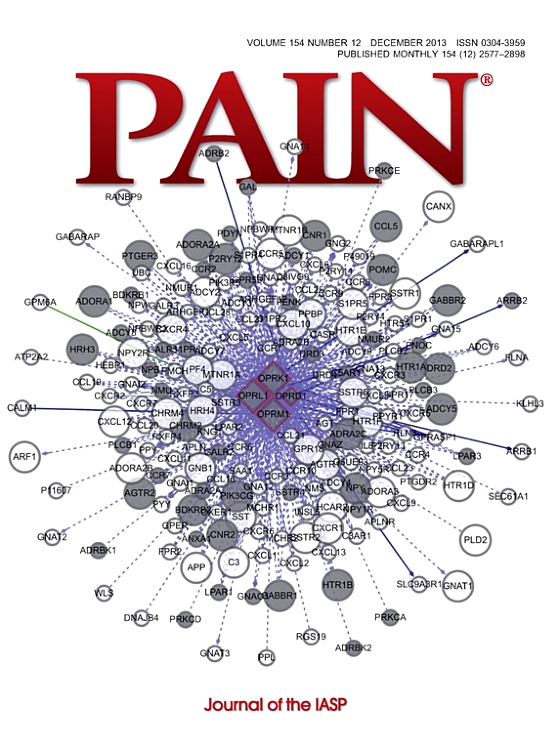National income inequality and adolescent chronic pain: a time series analysis of 29 countries.
IF 5.5
1区 医学
Q1 ANESTHESIOLOGY
引用次数: 0
Abstract
Chronic pain is a major public health concern in adolescence. It is not evenly distributed across the population, with higher prevalence among adolescents from lower socioeconomic status (SES) backgrounds. Evidence suggests that countries with greater income inequality report worse adolescent health and wider socioeconomic health disparities. However, international research on the role of national income inequality in shaping adolescent chronic pain remains limited. In this study, we examined whether national income inequality was associated with adolescent chronic pain prevalence and chronic pain-related socioeconomic disparities, and whether changes in income inequality over time corresponded to changes in these outcomes. Data were drawn from adolescents across 29 Western countries/regions that participated in 5 waves (2002, 2006, 2010, 2014, and 2018) of the Health Behaviour in School-aged Children surveys (pooled n = 826,563). Chronic pain and SES data were aggregated to create a country-level slope index of inequality and then combined with country-level national income inequality data. Prais-Winsten time-series regression models with panel-corrected standard errors were conducted. Results showed that higher national income inequality was associated with a higher prevalence of chronic pain (B = 0.303; P < 0.001) and greater chronic pain-related socioeconomic disparities (B = 0.003; P < 0.001). In addition, changes in national income inequality over successive survey years were associated with changes in chronic pain-related socioeconomic disparities (B = 0.004; P = 0.014). The study findings highlight the need for policies addressing structural income inequality and for integrating socioeconomic factors, social support, and community resources into interventions and treatments to reduce chronic pain prevalence and eliminate related disparities, especially among adolescents from lower SES backgrounds.国民收入不平等与青少年慢性疼痛:29个国家的时间序列分析。
慢性疼痛是青少年的一个主要公共卫生问题。它在人口中的分布并不均匀,在社会经济地位(SES)背景较低的青少年中患病率较高。有证据表明,收入不平等程度越高的国家,青少年健康状况越差,社会经济健康差距越大。然而,关于国民收入不平等在塑造青少年慢性疼痛方面的作用的国际研究仍然有限。在这项研究中,我们研究了国民收入不平等是否与青少年慢性疼痛患病率和慢性疼痛相关的社会经济差异有关,以及收入不平等随时间的变化是否与这些结果的变化相对应。数据来自参与五次(2002年、2006年、2010年、2014年和2018年)学龄儿童健康行为调查的29个西方国家/地区的青少年(汇总n = 826,563)。慢性疼痛和社会经济状况数据被汇总成一个国家级不平等斜率指数,然后与国家级国民收入不平等数据相结合。采用具有面板校正标准误差的Prais-Winsten时间序列回归模型。结果显示,较高的国民收入不平等与较高的慢性疼痛患病率(B = 0.303; P < 0.001)和较大的慢性疼痛相关的社会经济差异(B = 0.003; P < 0.001)相关。此外,在连续调查年份中,国民收入不平等的变化与慢性疼痛相关的社会经济差异的变化相关(B = 0.004; P = 0.014)。研究结果强调,需要制定政策解决结构性收入不平等问题,并将社会经济因素、社会支持和社区资源整合到干预和治疗中,以减少慢性疼痛的患病率,消除相关差异,特别是在社会经济地位较低的青少年中。
本文章由计算机程序翻译,如有差异,请以英文原文为准。
求助全文
约1分钟内获得全文
求助全文
来源期刊

PAIN®
医学-临床神经学
CiteScore
12.50
自引率
8.10%
发文量
242
审稿时长
9 months
期刊介绍:
PAIN® is the official publication of the International Association for the Study of Pain and publishes original research on the nature,mechanisms and treatment of pain.PAIN® provides a forum for the dissemination of research in the basic and clinical sciences of multidisciplinary interest.
 求助内容:
求助内容: 应助结果提醒方式:
应助结果提醒方式:


